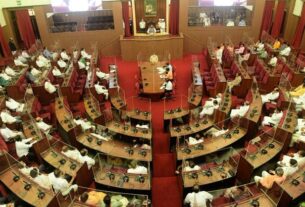Bhubaneswar: Chief Minister Naveen Patnaik on Saturday released Flood hazard Atlas of Odisha here in the presence of Agriculture & Farmers’ Empowerment Minister Arun Sahoo, Revenue and Disaster Management Minister Sudam Marndi, Water Resources Minister Raghunandan Das, Chief Secretary Aditya Prasad Padhi, Development Commissioner Asit Kumar Tripathy and ISRO scientists.
Who have prepared the atlas?
The atlas has been prepared by National Remote Sensing Center (NRSC) and ISRO, Hyderabad in collaboration with Odisha State Disaster Management Authority (OSDMA).
In the recent years, the focus of disaster management is increasingly moving on to more effective utilization of emerging technology such as Remote Sensing, Geographic Informatics System (GIS) and satellite communication.
As per the National Guidelines on Management of Floods by NDMA flood assessment needs to be made on a scientific basis.
The recent development in space technology has a tremendous potential to address the critical information needs during all the phases of disaster management.
National Remote Sensing Center (NRSC), ISRO, Hyderabad has taken up a study on flood hazard mapping for Odisha.
On what basis the atlas has been prepared
The flood hazard atlas has been prepared on the basis of historic flood inundation captured through satellite imageries over a period from 2011 to 2018 and the methodology adopted for arriving at the district-wise flood hazard index.
In this attempt, a large number of satellite images acquired over 18 years (2001-2018) were used.
All satellite data sets were analyzed and flood layers were extracted. All the flood layers corresponding to a year are combined as one inundation layer so that this layer represents maximum flooded area in one year. All such combined flood layers for 18 years were integrated into flood hazard layer representing the observed flood inundated areas with different frequencies.
This layer was integrated with digital database layers of Odisha.
Period mentioned in the atlas
The flood inundation maps represented in different colours indicate varying return period as observed during 2001 to 2018.
The road and railway lines are also shown to indicate the probable frequency of flooding those are subjected to.
The normal river course and water bodies are also shown in the map. Further, the layer was also integrated with digital database layers of different districts, these layers include road, rail, village, etc.
Rivers that cause flood
Floods in Odisha are regular features which happen almost every year. The vast areas of state are inundated due to the floods in major rivers namely, Mahanadi, Brahmani, Baitarani, Subarnarekha and Rushikulya. Some of the rivers like Vamsadhara and Budhabalanga also cause flash floods due to instant run-off from their hilly catchments.
The recurrent flood events at frequent intervals demand for identification of flood hazard prone areas in a scientific way for prioritizing appropriate flood preparedness and long term planning.
In Odisha, damages due to floods are caused mainly by the Mahanadi, the Brahmani and the Baitarani, which have a common delta where floodwaters intermingle, and, when in spate simultaneously, wreak considerable havoc.
The problem is further accentuated when flood synchronizes with high tide.
The silt deposited constantly by these rivers in the delta area raises the bed levels and the rivers often overflow their banks or break through new channels causing heavy damages.
The entire coastal belt is prone to storm surges, which is usually accompanied by heavy rainfall thus making the estuary region vulnerable to both storm surges and river flooding.
Few districts in the western and southern part of Odisha are prone to flash floods.
Who said what?
Odisha Chief Secretary Aditya Prasad Padhi said flood hazard atlas would serve as a useful resource of information for policy makers, planners, civil society group and all those who are involved in flood management in the State. The atlas can support the planning process and development by identifying high risk locations in a sustainable manner in a longer-term.
The information received from NRSC get customized at OSDMA and used for relief and rescue operations in the past disasters.
The atlas provides information on the areas of specific hazard zones which would help prioritizing mitigation and response efforts. The study is one of the most important non- structural measures, which facilitates appropriate regulation, and development of floodplains thereby reducing the impact.
The district-wise flood hazard maps for Odisha has been prepared which would help the disaster managers to address the flood management- related issues more judiciously and efficiently. In the longer-term, flood hazard maps can support the planning process and development by identifying high risk locations in a sustainable manner.
This atlas would give new dimensions towards the flood management and also taking up various flood preparedness measures in the state.



